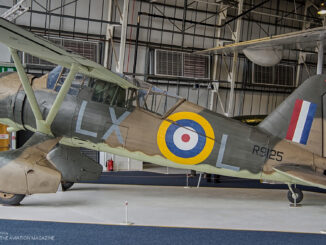
Kirby Chambliss in Zivko Edge 540 V3 streaking through the racetrack – Red Bull Air Race World Championship, Gdynia 2014
The history of the fastest motorsport in the world, as the Red Bull Air Race was often called, began in 2002. Back then, a well-known Hungarian aerobatic pilot Peter Besenyei introduced his concept of new competition to management of the world’s most famous energy drink brand – Red Bull. The company liked the idea and became the main, title sponsor of the sport that soon was accredited by the FAI. As a result, since 2005 it was officially recognized as a World Championship category competition.
The idea of the RBAR World Championship combined three basic factors – speed, precision, and skills. A group of carefully selected best racing and aerobatic pilots in the world was flying in highly modified race planes, reaching the speed of 370 kph and pulling up to 12 G. The racetracks were laid out by 25 metres high, air-filled pylons. The RBAR events were rotating several locations all over the world, with the races performed both over the land and water.
Although the main objective of the race remained relatively simple – to beat the track in a shortest time possible – in combination with all above mentioned factors, the air race concept was an unusual and breath-taking spectacle of high speed, low level, and extremely manoeuvrable flying.
On 28th June 2003, the new motorsport officially debuted with the season-opening race held in Zeltweg, Austria. Since then, the RBAR was organized annually until 2019, with a three-years technical break between 2011 and 2013.
In course of time, the Red Bull-branded air racing concept was constantly evolving, eventually becoming even more faster, competitive, and certainly more spectacular, comparing to the initial formula. It also became much safer, especially after the technical break, used for developing new safety measures.
In 2014, the fourth race of the season was held in Gdynia, Poland. This city, because of its location just on the shore of the Baltic Sea, was a perfect location to organize the air race – but, regrettably, it was the first and the only time in the history of this championship, when the RBAR was organized in Poland.
And for Polish fans of the air race it was exceptionally important, not only because it was for the first time organized in their country. It was also Łukasz Czepiela, the first Polish pilot in the RBAR, who was flying his debut season in the recently established Challenger Class. The Challenger concept was opened in 2014, allowing new pilots to get familiar with the race formula and gain some experience before joining the championship in the Master Class. And, for the record, it should be mentioned that Czepiela won the Challenger Cup in 2018, four years after his debut in the air race.
Pictured above, in our weekly ´Photo of the Week´ series, is Kirby Chambliss, one of two USA representatives in the Red Bull Air Race. Flying in his Zivko Edge 540 V3, the Texan pilot is streaking through the racetrack in Gdynia, finally finishing this round in tenth place.
Finally, Chambliss became one of the most experienced pilots of the air race, completing 13 seasons of the RBAR and scoring 10 victories and 32 podiums. He is also the third in the all-time winners of the air race World Championship, being the champion of 2004, 2006 and 2008 seasons. Chambliss is also a successful aerobatic pilot, with thirteen medals in World Championship category competition and also five in US National Unlimited Championships.
Regrettably, during the 2019 season it was officially announced by the Red Bull company, that the brand would not longer support the idea of air race. The already-running season was shortened to four races, instead of planned eight events. Since then, despite several rumours and announcements, the future of this spectacular and exciting championship remains uncertain.



